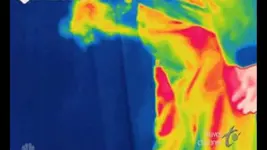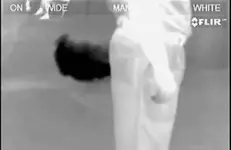Because the maximum measuring range and accuracy can be affected by atmospheric conditions (water vapor or carbon dioxide) the maximum range is generally limited to approximately 100 feet.
The accuracy of the handheld IR thermometer is primarily determined by the distance-to-spot ratio (D/S Ratio). This ratio is the size of the area being evaluated by the IR thermometer as it relates to distance. In other words, the area being measured becomes larger as the distance increases. The smaller the target, the closer you should be to it. This ratio will have a significant impact on the accuracy or precision of the reading. If the target you are measuring is six inches in size, and your handheld infrared thermometer has a D/S ratio of eight to one, then the maximum distance at which you can reliably measure the temperature of the target is 48 inches (8:1 x 6 = 48). Beyond this distance, not only is the target being measured, but whatever else falls within the "spot" is being measured as well. This means that if a very hot object is the target, and it is in cooler surroundings, then measurements taken beyond the maximum distance will include cooler elements, lowering the "average" of what is in the "spot."



 I hope I haven't overlooked anything and appear dumb.
I hope I haven't overlooked anything and appear dumb.



